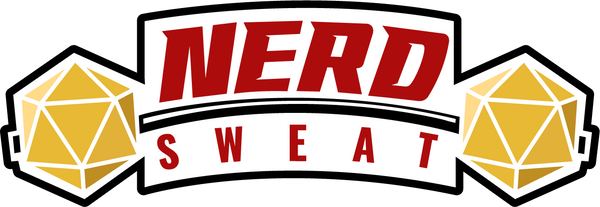
Random Encounter Tables Done Right: Breathing Life into Greyhawk’s Wilderness
Why Random Encounters Still Matter in Modern D&D
In a traditional campaign, random encounters often get a bad rap—viewed as filler or distractions from the “main story.” But in a West Marches campaign, especially one set in a living world like Greyhawk, they are essential. These moments create unpredictability, reinforce world flavor, and make every journey into the wilderness feel like an adventure unto itself.
For our Common Grounds Guild of Greyhawk campaign at Common Ground Games in Dallas, TX, we leaned heavily on random encounter tables to add variety during our first multi-table epic event. With multiple groups adventuring simultaneously in different regions, encounter tables ensured that no two tables experienced the exact same threats, creatures, or lore reveals—even while tackling the same overall objective.
How Random Encounter Tables Shape Your West Marches World
Unlike set-piece combat or planned story arcs, random encounters reflect the organic, evolving nature of a West Marches world. Here’s how they support strong play in Greyhawk:
- Regional Identity: Each area—like the Cairn Hills or the Gnarley Forest—has a unique feel. Custom tables filled with local monsters, druidic cults, or faction patrols make regions distinct.
- Dynamic Exploration: Players feel like the world is moving around them. Bandits might retreat, beasts might migrate, and events from other tables might spill over.
- Worldbuilding on the Fly: Encounters become lore hooks. A group ambushed by Scarlet Brotherhood scouts might later discover a hidden outpost through investigation—or pass that intel to another party.
Building a Better Encounter Table (Greyhawk Style)
Want your random encounters to add more than combat? Use this 5-column method for crafting encounters that offer both flavor and variety:
| Column | Purpose |
|---|---|
| Creature/Group | Who’s present? (e.g., Flan ghosts, brigands, owlbears) |
| Activity | What are they doing? (e.g., hunting, fleeing, performing a ritual) |
| Context | Why are they here? (e.g., defending territory, searching for something) |
| Twist | Something unexpected (e.g., they're infected, cursed, offering help) |
| Loot/Lore | Reward or clue (e.g., map fragments, Greyhawk lore, faction symbols) |
Example Encounter (Gnarley Forest Table):
- Creature: A druidic circle of Obad-Hai
- Activity: Performing a ritual
- Context: They’re trying to calm an unnatural storm
- Twist: The storm was caused by another party’s earlier actions
- Lore: They offer cryptic warnings about a growing disturbance beneath the forest floor
How We Used Random Encounters in Our Epic Event
During our multi-table event at Common Ground Games, we ran simultaneous tables trying to breech a toxic factory to stop a poison distribution ring on behalf of the guild. Each tier had its own random encounter table tailored to the character levels and storyline branch.
Some highlights:
- One group encountered a Gray Ooze protecting a corrupted fountain.
- Another table fought off a Carrion Crawler that used hidden gas pockets to blind attackers.
- A third team avoided encountered a Delerium Sludge created by the run off from the factory.
Because each DM pulled from a tailored encounter table, the overall event felt unified—but not repetitive. Players shared wildly different experiences when we reconvened for our epic conclusion.
Resources to Build Better Tables
If you want to dive deeper into this style of play, here are some great tools and sources:
- 📖 Xanathar's Guide to Everything (5e) – See Chapter 2 for encounter tables by terrain.
- 🧠 Greyhawk Encyclopedia (Canonfire!) – www.canonfire.com has lore-rich NPCs and monsters you can repurpose.
- 🧰 Donjon Random Encounter Generator – www.donjon.bin.sh for quick ideas.
- 🗺️ Hex Flower Systems by Goblin’s Henchman – Adds persistent ecosystem behavior to your encounter rolls.
Final Thoughts: Let the Dice Tell a Story
When done right, random encounters aren’t random at all—they're an extension of your setting’s themes, tensions, and living ecosystem. In the Common Grounds Guild of Greyhawk, every dice roll during travel or downtime is a chance to deepen the world and give your players a story no one else will experience.
So build your tables with care. Populate them with faction agents, mysterious ruins, and echoes of past player choices. And the next time your players ask, “What’s on the road today?”—let the wilds of Greyhawk answer.
